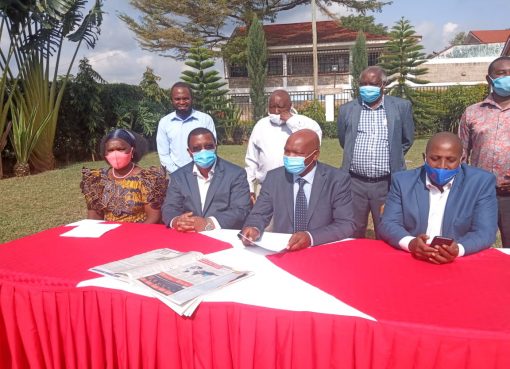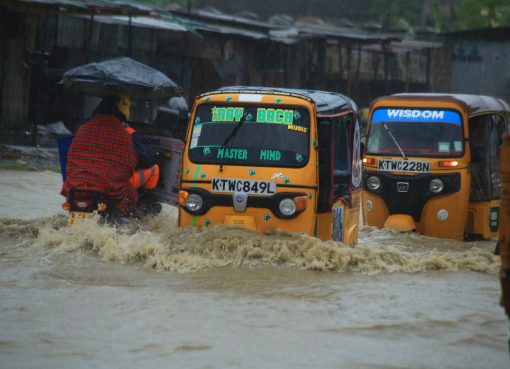German-Omani producers have hacked back in time to the 17th century Omani maritime empire in a documentary of Omani culture impact on the Coast of Kenya through the lenses of Liwali (Governor) Mbarak Al-Hinawy that premiered in Mombasa on Monday.
Al-Hinawy, an Omani by origin started as a Liwali of Mombasa, now a bustling port city from 1937-1941 before he served as the Liwali of the ten-mile coastal strip from 1941-1959 under the Sultanate of Zanzibar.
He is credited with initiating mega infrastructure projects including schools and a storm water treatment plant. He also played a pivotal role in assisting Kenya to gain her independence.
Friedrich Klütsch, the Producer, Director, and Scriptwriter of the ‘House of Wonders’ film explains that the film investigates the historical relations between Oman and the East African coast and how the Omani heritage is connected to the Swahili coast.
The film has three episodes. The first episode is christened, A Trader’s Empire, looks at the life of Sayyid Said bin Sultan, a ruler of Oman and Zanzibar, episode two is called, The Age of Caravans – Tippu Tip, a slave trader.
The third one dubbed, the Voice of Mbarak, documents the life of Mbarak Al Hinawy a conscientious ruler of the ten-mile coastal strip.
“We aimed to show the richness and diversity of this heritage and its contribution to the Swahili culture at the coast of Kenya,” said Klütsch during the premiering of episode three at the Nyali Cinemax, Mombasa.
“It is about the life and story of Mbarak Al-Hinawy, who used to be the Liwali of the Coast. We want to share this beautiful film with you and the audience that is coming here tonight,” added the German Producer.
He stated that the main cast of the documentary is from Oman since the film tells the story of Omani people who worked, lived and brought their culture and heritage to the East African Coast and shared with the people of East Africa.
Voice of Mombasa has incorporated historians from Kenya and was also filmed in Mombasa and Lamu.
“We had a lot of people contributing to our film, especially the documentary parts. We filmed at KBC, OldTown, House of Mbarak Al Hinawy and Fort Jesus. There are a lot of locations, we also did stunning sequences in Lamu. Kenya has a lot of space in this film,” stated Klütsch.
The film has Arabic, English and Swahili versions. The Swahili version was done in Mombasa with Kenyan talents.
There was a hiatus in the production of the film that began in 2019 when the Coronavirus pandemic hit the world.
Producer Klütsch noted that there is so much heritage, many people and memories and it’s impossible to fill all of them in 53 minutes. “We had to do a selection, we had to make choices and we hope we did the right ones,” he said.
Klutsch added that, “I have been filming in the surroundings of the Indian Ocean a lot and on the Swahili coast you find these unique combinations of cultures. You have African, Arabic, Indian and Western cultures. All of these come together in the Swahili culture.”
He urges other filmmakers across the globe who are looking at diverse populations, architecture and beautiful landscapes to come to Mombasa.
Juma Al-Maskari, the co-producer said the history of Oman and East Africa is intertwined for more than 2000 years and they want to showcase the history and the nexus between the Omani and East Africa Coast to give birth to Swahili culture.
“Mbarak Al-Hinawy was the Liwali of the Kenyan Coast before Kenya gained her independence. He was under the Sultan of Zanzibar, he assisted the late Jomo Kenyatta until Kenya gained her independence,” said Al-Maskari.
Al-Hinawy, he added, did a lot of development in Mombasa from schools, storm water drainage and other developments.
Mombasa based historian Stambuli Nassir urges the National Museums of Kenya to maintain a road named after Mbarak Al Hinawy leading to the old port.
“It is an important area as it used to host embassies, the first assembly, and the head office of the Imperial British East Africa Company. Many in Kenya don’t know that the government started there. All major banks were domiciled there, Posta and police station but now the road is in a dilapidated state,” said Nassir.
He added that Al-Hinawy during his tenure faced resistance during his rule but he understood the local people, and he had both positive and negative impacts as a leader.
Khadija Abdulkadir, a makeup artist advised youths to learn special effects makeup to improve on local films to measure to international levels.
Shamira Waweru, a dubbing artist, translated the film from English to Kiswahili. She localized the production which was largely done in the Arabic language to a Mombasa-based story.
“It was interesting for me and at the same time challenging because this is a story about Mombasa that is being sent to me from German to localize it to our dialect. I felt like, is it that we are failing or what because people from far away are coming to do our stories and we have to localize it,” said Waweru.
By Sadik Hassan



